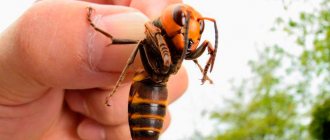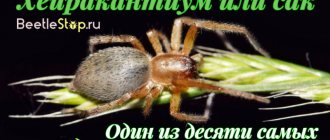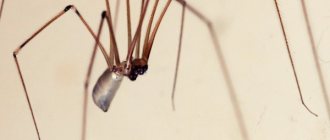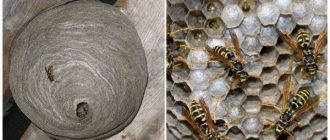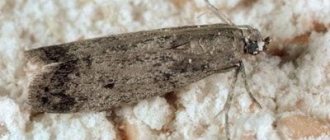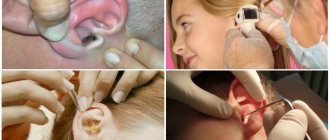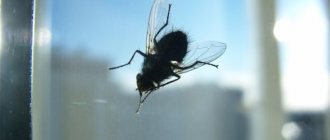Arachnids belong to the arthropod animals of the Arachnida class, which differ from insects in the number of legs (8, not 6). They are widespread throughout the world, more than 42 thousand species of spiders are known, and some species live in the central European part of Russia, including the Moscow region. Spiders in the Moscow region live both indoors with people and in the wilderness.
On a note!
Arachnids are predators because they feed on insects. They first catch them using a web or other means, and then immobilize them by injecting special saliva, which is produced by the glands. Some species are poisonous, while others are completely harmless to humans. Below are photos and names of various species of spiders living in the Moscow region.
Dangerous and harmless species of large spiders in Russia
Each type has distinctive characteristics, appearance, and lifestyle in accordance with its habitat. The range of arthropods may change due to climate change. Species that occupied certain regions migrate and colonize new territories.
Features
These arthropods have 4 pairs of legs. On the front there are poisonous claws - chelicerae. There are 6 spider warts at the bottom of the body, paired eyes on the head. Their number depends on the species (8 or 6, sometimes 2 eyes).
Food is digested outside the intestines. The spider injects liquefying enzymes into the victim, and then sucks out its insides.
Note! Spiders do not attack animals or people first, but bite only in case of danger. This is their defensive reaction.
On the forelimbs there are bulbs containing sperm for fertilizing the female. After mating, the spider kills the male, and therefore the life expectancy of the latter is much shorter than the female. Sometimes the spider manages to escape. For the safe growth and development of newborns, the mother places them in a cocoon she has woven.
How to behave if you meet a snake?
The main rule when meeting any wild animal is not to disturb it, watch it from afar and under no circumstances try to catch it. Snakes never attack first. Even in case of danger, they try to crawl or hide as quickly as possible.
If you do get bitten, try to calm down - this will allow the poison to spread throughout the body more slowly. It is important to seek medical help as quickly as possible. It is worth drinking plenty of fluids and taking anti-allergy medications. However, most often the viper’s venom does not pose a mortal danger to an adult. The greatest risk of bites is for children and allergy sufferers.
Karakurt
House spiders
A class of arthropods that lives in commercial and residential buildings. It has a yellow-brown body with a brownish or bright orange pattern on the back. The legs are darker and almost twice as long as the body. The size of the individual is from 70 to 12 mm.
The shape of the web resembles a funnel, in the center of which sits a spider waiting for its victim. It feeds on small insects (flies, moths, cockroaches). This species is found throughout Russia.
Orb weaver in nature
Lives under the layer of bark of the upper part of trees. The arthropod weaves a web around their branches. Poisonous saliva poses a danger not only to insects, but also affects small vertebrates (mice, rats, frogs, rabbits). For large animals and humans, the amount of poison is considered insufficient.
Orb weavers are quite voracious creatures. They can eat about 8 insects in one go. He cleans the web of inappropriate prey or debris by cutting off the contaminated section of the web.
Argiope arthropods
Spiders in central Russia have recently been found in the Ryazan, Tula, and Moscow regions) are not capable of harming large animals and people. They are found near roads with abundant vegetation. Their black and yellow striped coloring is similar to that of a wasp. The abdomen and head are covered with short hairs. Males are small in size up to 5 mm, and females reach 25-30 mm. They hunt at night using webs.
The sting of an arthropod resembles that of a bee. The poison is not particularly dangerous. Among the consequences, there is mildly noticeable pain and swelling of the affected area, lasting up to 3 days.
Trudoviks knitters
The favorite delicacy of the individual is the centipede mosquito. To catch it, the arthropod weaves a round net with large rectangular cells. Females grow up to 30 mm, males are much smaller.
The elongated body with long legs helps to camouflage in case of danger. The knitter extends his legs along the length of his body, resembling a dry branch in appearance. If threatened, he falls down and instantly disappears from view.
The individual is an outdoor spider that lives in natural conditions and does not live indoors. They are more common on Russian territory than in other countries.
What does it eat?
In its natural habitat, arthropods hunt for small insects. To do this, the spider uses a trapping net stretched near the nest. The animal is characterized partially by external digestion. Poison is injected into the body of a victim entangled in a web, paralyzing the insect and gradually digesting the tissue inside the chitinous cover.
The spider bites the victim from all sides, leaving it unharmed for a while. It then sucks out the liquefied tissue, puncturing the protective coating. The empty chitinous shell remains hanging in the web for a long time.
Mosquitoes
Considering the small size of the spider, mosquitoes are quite suitable as objects for hunting. Insects fall into stretched nets, landing on the ground or grass, becoming victims of karakurts.
flies
The karakurt web can easily hold a fly. When the prey is securely entangled in the web, the spider begins to process the victim.
Cockroaches
Even such ancient species of insects are susceptible to successful attacks by karakurts. Like other victims, they are caught by spiders in a similar way - in the trapping web. The sharpness of the arthropod's jaws makes it easy to break through the chitinous coating to begin processing the victim.
How long does he live?
The maximum lifespan of the karakurt spider is up to five years. Considering the peculiarities of mating games of arthropods, females live significantly longer than males. But even female representatives are sometimes unable to survive the harsh winter. Therefore, these animals prefer warm climates.
But, given the high fertility and rapid development of offspring even in frosty winters, the population is successfully developing, increasing its numbers.
Dangerous classes
Species of arthropods that inject toxic substances with their bite. The consequences of such sabotage must be eliminated by resorting to medical assistance. To protect yourself from danger, you need to know the names and description of the appearance of this type of spider.
Common crosses
These are spiders from central Russia. They eat small insects that get caught in the web (flies, bees, hornets, butterflies). The specimen's venom contains liquid digestive enzymes that paralyze the victim and soften its body. In a well-fed state, the spider leaves its prey for later, hanging it on the edge of the web.
The spider is considered a forest spider; individuals can be observed in watery areas, meadows and orchards.
The body color fully justifies the name of the arthropod. On his back there is an ornament in the form of a cross.
Additional Information! During the hot season, the body of this arachnid acquires a waxy coating, which serves as a barrier to the abundant evaporation of fluid in its body.
The spider has 2 pairs of eyes. The transition from the head to the abdomen is equipped with an armor-like cover, on which 6 arachnoid warts with many microscopic pores are located.
The mating season occurs in August. The male pulls the signal web on the net, calling the chosen one to the act. At the end of the mating, the female eats it. After laying eggs, she also dies. The eggs spend the winter in a cocoon prepared by the mother. Spiders are born in mid-spring. The young reach maturity after the end of the next winter.
Harmful chiracantids
The habitat of this poisonous representative of arthropods is grass and shrub thickets in the middle zone. The variety is called stray because it does not weave web traps. The spider hunts mainly at night, hiding in the dark. It attacks in a jump as soon as it feels the victim's touch. It feeds on caterpillars, grasshoppers, moths, aphids, and is wary of wasps and ants.
The oval body, tapering towards the bottom, is colored yellow or green. The front legs are longer than all the others. The female can reach sizes from 5 to 15 mm.
Symptoms and consequences of a bite:
- acute pain in the affected area;
- burning;
- spread of symptoms over the skin;
- swelling and dull pain of the lymph nodes;
- labored breathing.
There is no itching or paralysis of muscles, provided that assistance is provided in a timely manner. Other symptoms weaken and disappear within 48 hours.
Poisonous karakurt
This species of arachnid is considered to be extremely poisonous and inhabits the southern regions of the Urals and the Caucasus. With climate warming, the habitat boundaries are expanding to the northern regions, Siberia.
An outdoor species of arthropods that do not live inside houses and buildings, but build burrows near dwellings, mainly in cluttered areas. They quarrel with wasps and hedgehogs.
The body of the spider is black or gray with red spots. With age, the body darkens and the striking spots become dull.
The greatest danger is the female after several molts. The young specimen is not very poisonous.
The female builds a den in depressions in the soil and often inhabits rodent burrows, placing a web barrier at the entrance. The eggs overwinter in a cocoon; in the spring, the young are scattered by the wind along with the cobwebs.
Additional Information! The enemies of this spider are repelled by its protective coloring, or rather by the striking red spots on its abdomen. Predators avoid arthropods.
The karakurt attacks animals and humans if it is disturbed.
Symptoms:
- rapid burning pain;
- acute spasms in the abdomen, chest, lower back;
- difficulty breathing, shortness of breath;
- increased heart rate and pulse.
If help is not provided in a timely manner, consciousness becomes confused, accompanied by a delusional state. To neutralize the poison, an antikarakurt solution, novocaine, sodium bisulfate, and calcium chloride are used. The infected person needs immediate medical attention.
South Russian tarantula
The largest spiders in Russia are light gray in color, up to 30 mm in size, with a lifespan of up to 2 years. Lives in areas with a dry climate (forest-steppe, semi-desert, steppe). Among the most common places are Tambov, Lipetsk, and Astrakhan regions. Lives in a deep hole, which he digs himself, covering its walls with cobwebs. It detects the prey by the shadow when it moves near the predator's lair. Instantly pounces and bites. The prey becomes completely paralyzed.
It catches prey by jumping on it from a height of 15 cm. An arthropod bite does not cause acute pain, but without medical intervention it can cause the following symptoms:
- nausea;
- fever;
- swelling of the lymph nodes.
Death is unlikely, but health problems are common.
Individuals copulate closer to autumn. The female tarantula is attracted by the sound of vibrations from the abdomen, while vigorously jerking its legs. After mating, the male runs away. The spider bears her offspring in a woven cocoon, which she attaches to her body. After the children hatch, the mother breaks through it and releases the babies, puts them on her body and carries them until they get stronger.
The spider spends the winter in a hole, clogging the entrance with soil.
Important! The presence of hypersensitive hairs on its paws allows the tarantula to hear human footsteps at a distance of several kilometers.
Scorpios
They hunt mainly at night. There are more than 1,500 species in the world. About 15 species are found on the territory of the former USSR. Among them:
- Italian scorpion (body length up to 5 cm) - lives on the Black Sea coast;
- Mingrelian scorpion - from the shores of the Black Sea it spreads along the banks of rivers inland;
- Crimean - found on the southern coast of the Crimean Peninsula;
- thick-tailed scorpion - the largest, up to 10 cm long;
- The motley scorpion lives in the Volga region, Transcaucasia, and Kazakhstan.
Scorpion venom is neurotropic in nature. The toxic proteins contained in it lead to disruption of the functioning of various systems and organs.
The bite is accompanied by severe burning pain, which either subsides or intensifies. Over time, the pain turns into a burning sensation. After 40 minutes, swelling forms at the sting site with a clearly visible dark dot in the center of the bite. Blisters with serous filling may form.
The time period for symptoms to appear ranges from 5 minutes to 24 hours. The headache is growing. Dizziness, convulsive muscle contractions and tremors, tachycardia appear, and blood pressure increases. The victim is agitated and may experience fear. Death from respiratory paralysis is likely within 20–30 hours.
In some cases, after the disappearance of clinical signs of poisoning, a relapse is possible. The victim should be under medical supervision for at least 12 hours after symptoms disappear.
First aid, treatment and prevention
an antidote is injected. In the absence of qualified assistance, the poison is sucked out of the wound, a cooling bandage is applied, and the bite site is treated with antiseptic drugs. The victim needs complete rest.
Scorpions can hide in the grass or burrow shallowly in the sand. Therefore, you must always wear shoes with strong soles. In areas where scorpions live, you should inspect clothing, shoes, and living quarters. Protective nets on windows and doors, sealed cracks in walls and ceilings will protect the house from the penetration of poisonous arthropods.
Poisonous arachnids

